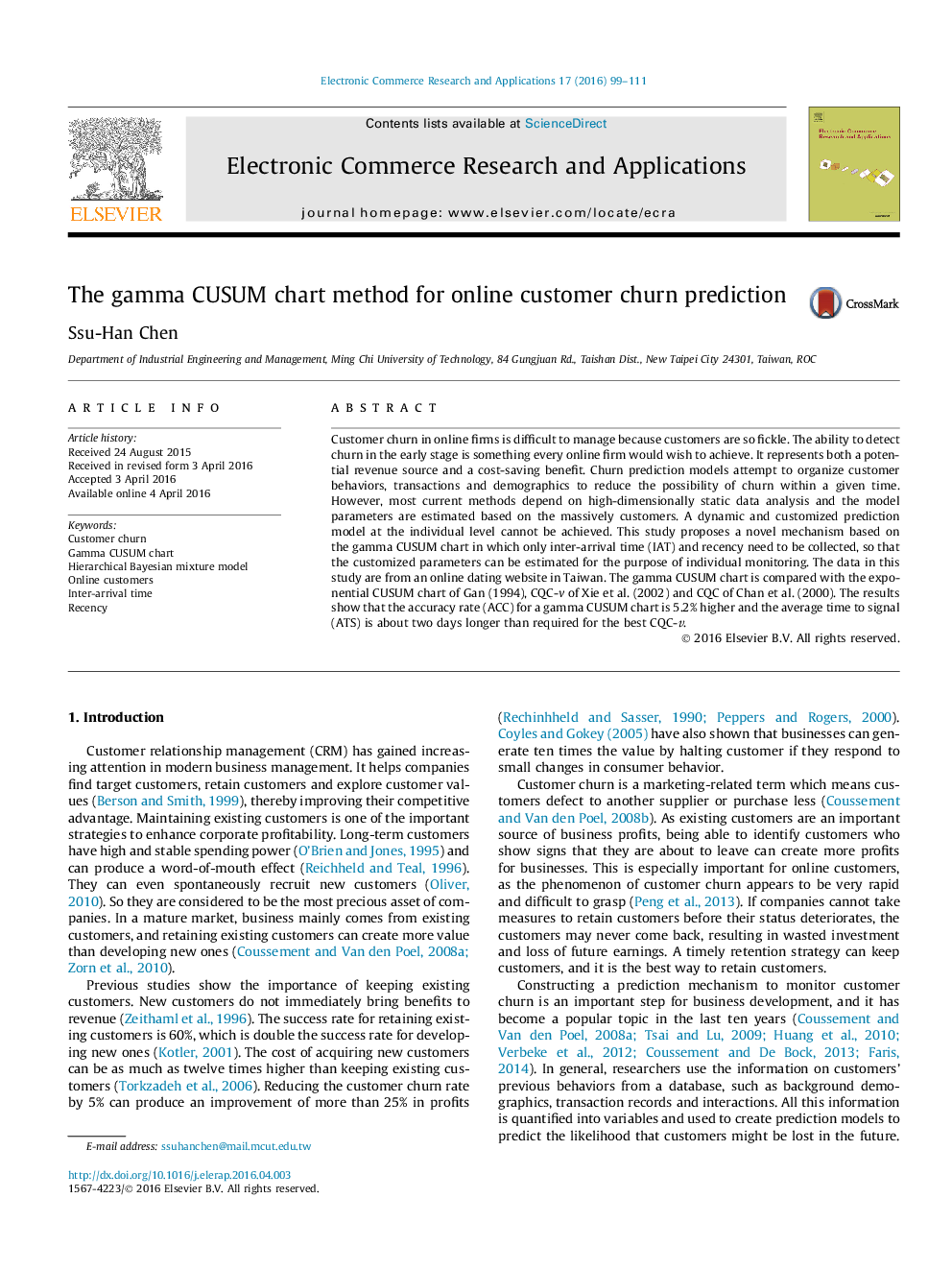| کد مقاله | کد نشریه | سال انتشار | مقاله انگلیسی | نسخه تمام متن |
|---|---|---|---|---|
| 379552 | 659483 | 2016 | 13 صفحه PDF | دانلود رایگان |
• An individual customer churn predicting mechanism is proposed.
• This mechanism is based on gamma CUSUM chart and hierarchical Bayesian model.
• Inter-arrival time and recency are integrated to improve TPR and reduce ATS.
Customer churn in online firms is difficult to manage because customers are so fickle. The ability to detect churn in the early stage is something every online firm would wish to achieve. It represents both a potential revenue source and a cost-saving benefit. Churn prediction models attempt to organize customer behaviors, transactions and demographics to reduce the possibility of churn within a given time. However, most current methods depend on high-dimensionally static data analysis and the model parameters are estimated based on the massively customers. A dynamic and customized prediction model at the individual level cannot be achieved. This study proposes a novel mechanism based on the gamma CUSUM chart in which only inter-arrival time (IAT) and recency need to be collected, so that the customized parameters can be estimated for the purpose of individual monitoring. The data in this study are from an online dating website in Taiwan. The gamma CUSUM chart is compared with the exponential CUSUM chart of Gan (1994), CQC-v of Xie et al. (2002) and CQC of Chan et al. (2000). The results show that the accuracy rate (ACC) for a gamma CUSUM chart is 5.2% higher and the average time to signal (ATS) is about two days longer than required for the best CQC-v.
Journal: Electronic Commerce Research and Applications - Volume 17, May–June 2016, Pages 99–111
